What is Phantom wallet and how to use it?
Learn what Phantom Wallet is, its key features, and how to use it for managing Solana tokens, NFTs, and dApps. Our setup guide has you covered.
By Corey Barchat

Cryptocurrency wallets are an essential tool for people to store tokens efficiently and securely. In some cases, there are platforms that go beyond mere storage, empowering users to navigate vast blockchain ecosystems.
If you're diving into the Solana blockchain, one of the most common wallets you’ll come across is Phantom. This wallet has garnered attention for its Solana focus, user-friendly interface, and support for decentralized finance (DeFi) and non-fungible tokens (NFTs).
Whether you’re new to crypto or a seasoned Solana investor, Phantom Wallet could be the right tool to manage your digital assets on Solana and beyond. But what's Phantom wallet all about?
In this guide, we’ll take you through everything you need to know about Phantom—what it is, how to set it up, how to use it, and how it compares to other popular wallets.
What is Phantom wallet?
Phantom wallet is a crypto wallet built specifically for the Solana blockchain. As a non-custodial wallet, it lets you control your private keys, putting you in charge of your assets rather than relying on a third party. Phantom specializes in managing Solana-based tokens, NFTs, and DeFi applications, though it also has cross-chain compatibility.
Since its launch, Phantom has quickly risen to prominence, becoming one of the preferred wallets for users looking to interact with Solana's fast, low-cost blockchain. At the same time, it's also added support for other chains like Ethereum, Polygon, Base, Sui, and even Bitcoin.
Key features of Phantom wallet
Compared to other crypto wallets, Phantom stands out for its wide range of features that cater to both beginners and advanced users. Let’s explore some of them:
Multi-chain support
Phantom's primary focus is Solana, but it has also expanded to support other blockchains like Ethereum, Polygon, Bitcoin, and now Sui. The ability to manage assets across multiple blockchains makes it a versatile option for crypto enthusiasts who aren't tied to just one chain.
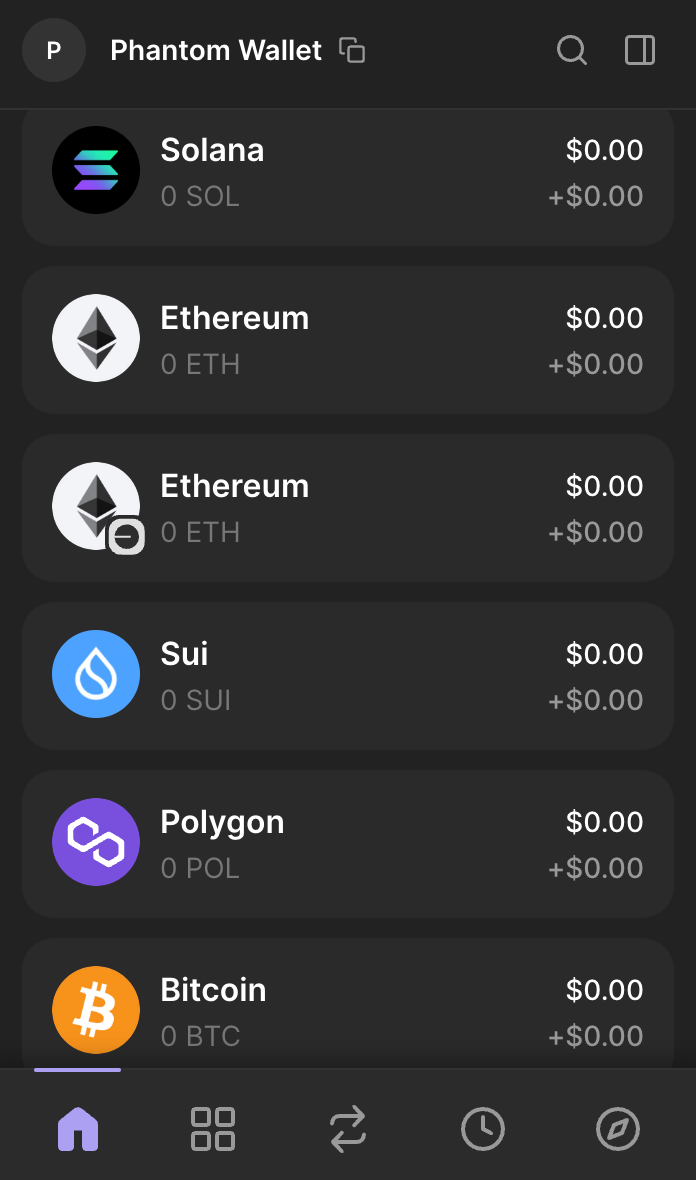
Solana’s core attributes of high-speed/low-cost transactions are the right fit for Phantom, especially for users seeking fast and easy interactions with dApps and decentralized exchanges (DEXs).
User-friendly interface
One of Phantom’s standout features is its sleek, intuitive interface—if you've ever used Phantom, you'll know exactly what we mean.
The wallet is designed to make crypto token management easy for both newcomers and experienced users. With a simple layout and clear, easily accessible features, anyone can quickly navigate between their assets, tokens, and NFTs (non-fungible tokens) without the steep learning curve that accompanies other wallets.
Built-in swaps
Phantom Wallet allows users to swap tokens directly within the wallet interface. Its built-in swap feature supports many SPL tokens on the Solana network, making it convenient for users who want to trade crypto without the need for a third-party or centralized exchange.
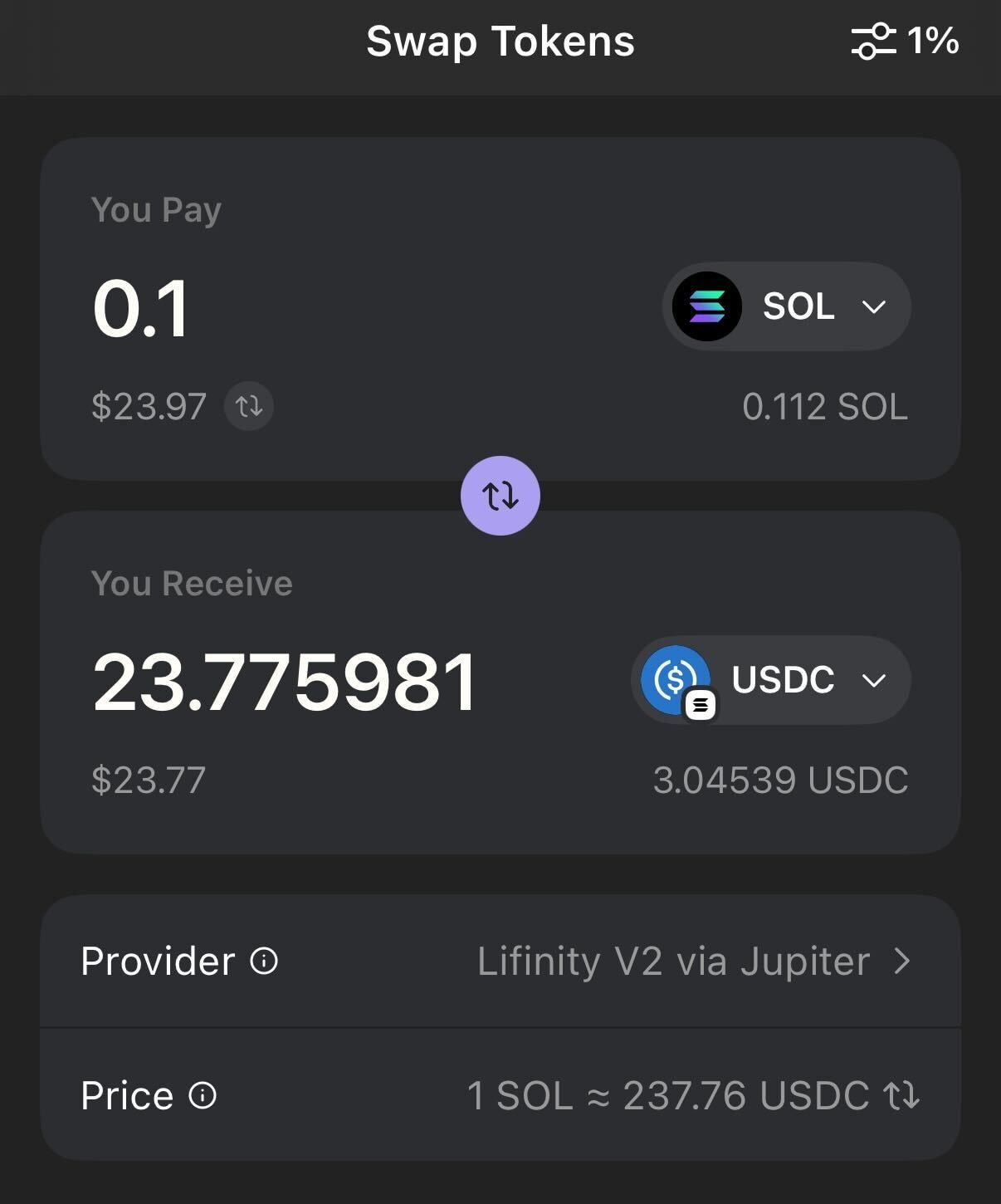
Native swaps in Phantom are suitable for users that frequently exchange tokens and want to do so in the fast, cost-effective manner that Solana is known for.
Want to swap SOL for tokens on other blockchains like Ethereum, Polygon, and Base? With Phantom's Cross-Chain Swapper, you can.
NFT & DeFi compatibility
In the last few years, NFTs have erupted in popularity. Specifically, the Solana blockchain has become a hotbed of NFT activity where users can buy, trade, and sell collectibles cheaply and quickly. Naturally, Phantom's SOL-based wallet makes it easy to manage and trade NFTs on Solana. The wallet lets you view your NFT collections, buy, sell, and transfer NFTs, all within the platform—and through its native links to NFT marketplaces like Magic Eden.
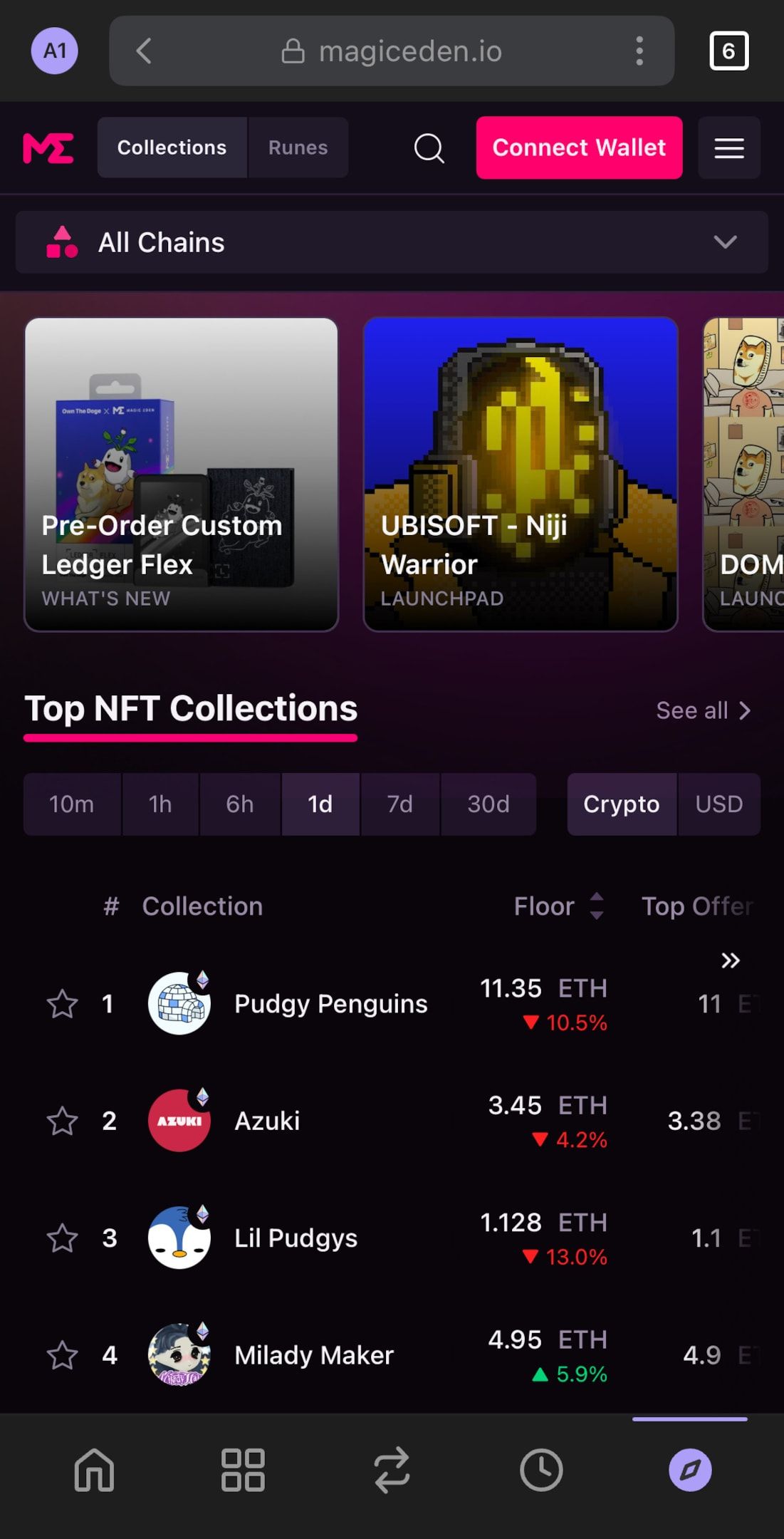
Similarly, Phantom wallet supports some native DeFi protocols, with easy integration to external dApps as well, such as staking, liquidity pools, yield farming, and lending/borrowing.
Security & privacy
As a non-custodial wallet, you control your private keys, which are never shared or stored on a central server. Phantom also supports features like hardware wallet integration and secure backups, helping to protect your funds against potential threats.
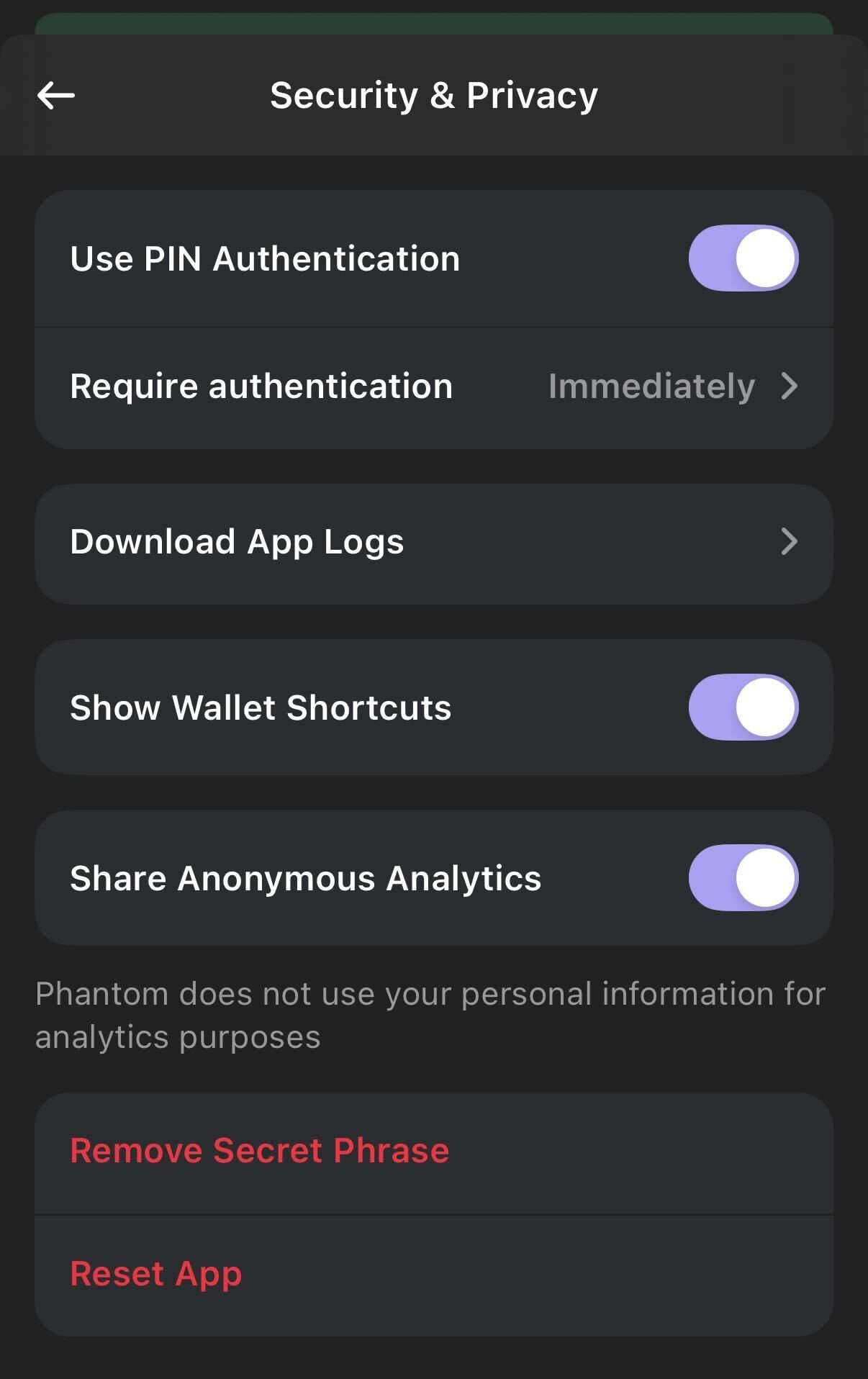
However, it should be noted that there have been instances where users' Phantom wallets were "drained" due to previous smart contract bugs and connecting to malicious applications and websites. While Phantom implements security protocols, no wallet can guarantee that funds will always be impervious to threats.
Browser extension & mobile app
Phantom wallet is available as both a browser extension and a mobile app, meaning you can access your funds no matter where you are. The browser extension works seamlessly with popular browsers like Google Chrome, Firefox, Brave, and Microsoft Edge, while the mobile app is available for both iOS and Android devices.
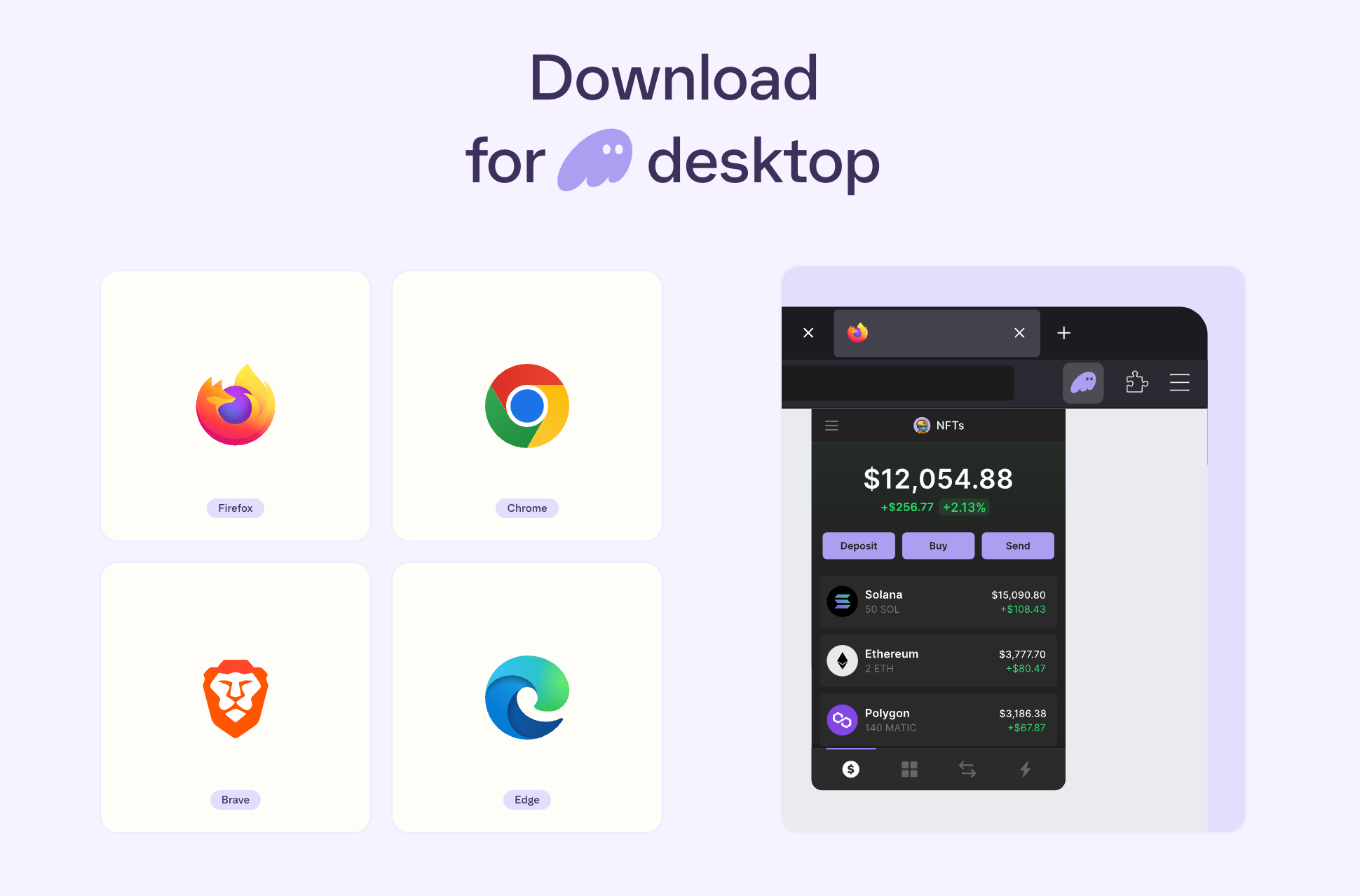
Phantom's device flexibility allows you to manage your crypto and NFTs whether you're at home or on-the-go. If you've ever found yourself needing to top up for a new NFT or token launch, you can rest assured that your wallet will go wherever you do.
Explore
The Explore tab within Phantom Wallet gives users access to various resources, including trending token lists, popular dApps, NFT marketplaces, and other Solana-based platforms. It’s an easy way to discover new opportunities and interact with the fast-growing Solana ecosystem.
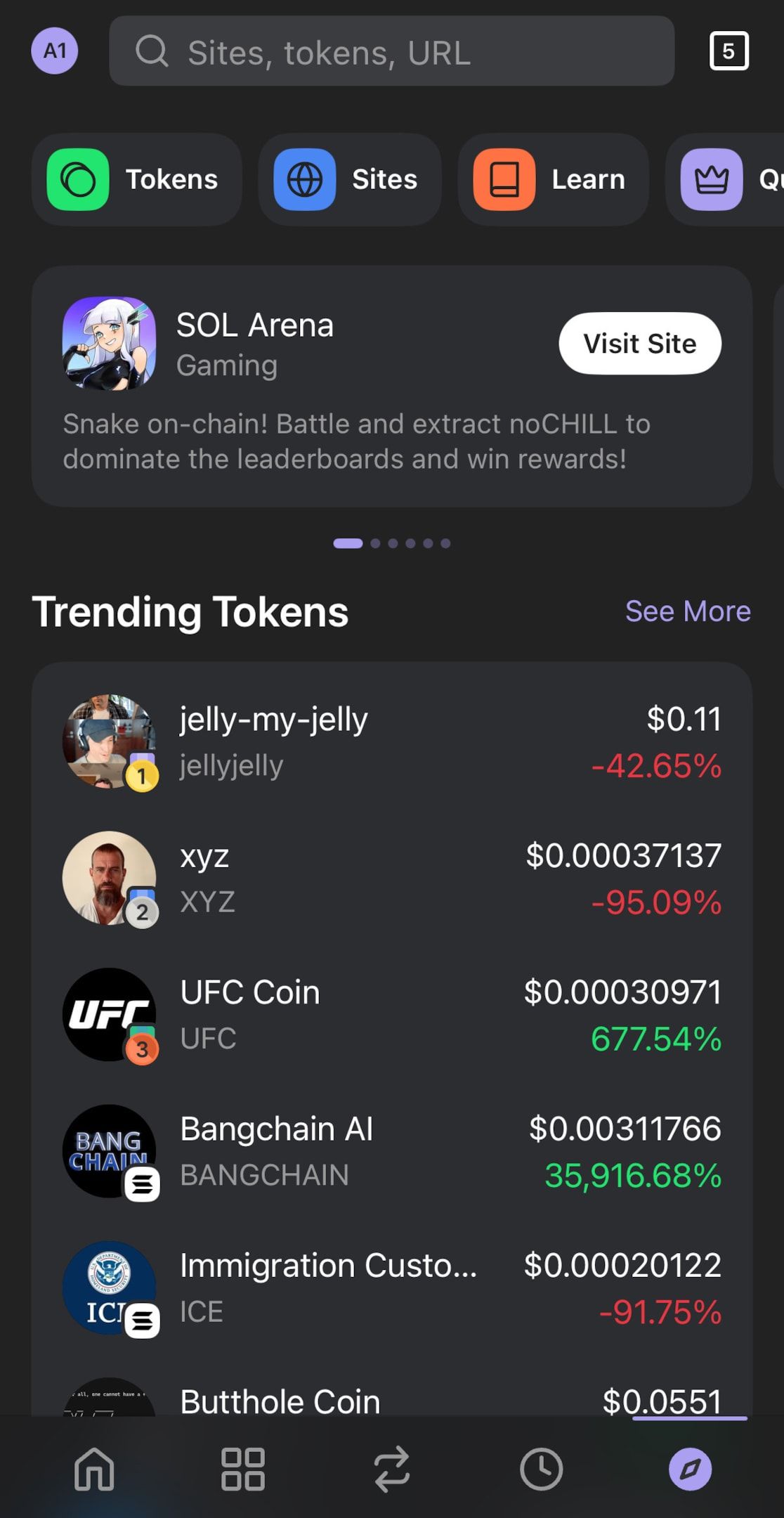
How to set up Phantom wallet: Step-by-step guide
Getting started with Phantom Wallet is a relatively straightforward process, whether you're a Solana newbie or a cross-chain pro. Follow these simple steps to set up your Phantom wallet:
How to download Phantom wallet
To get started, head over to the official Phantom website (phantom.app) and download the wallet on your preferred device. You’ll have the option to install the browser extension or the mobile app, depending on your preference.
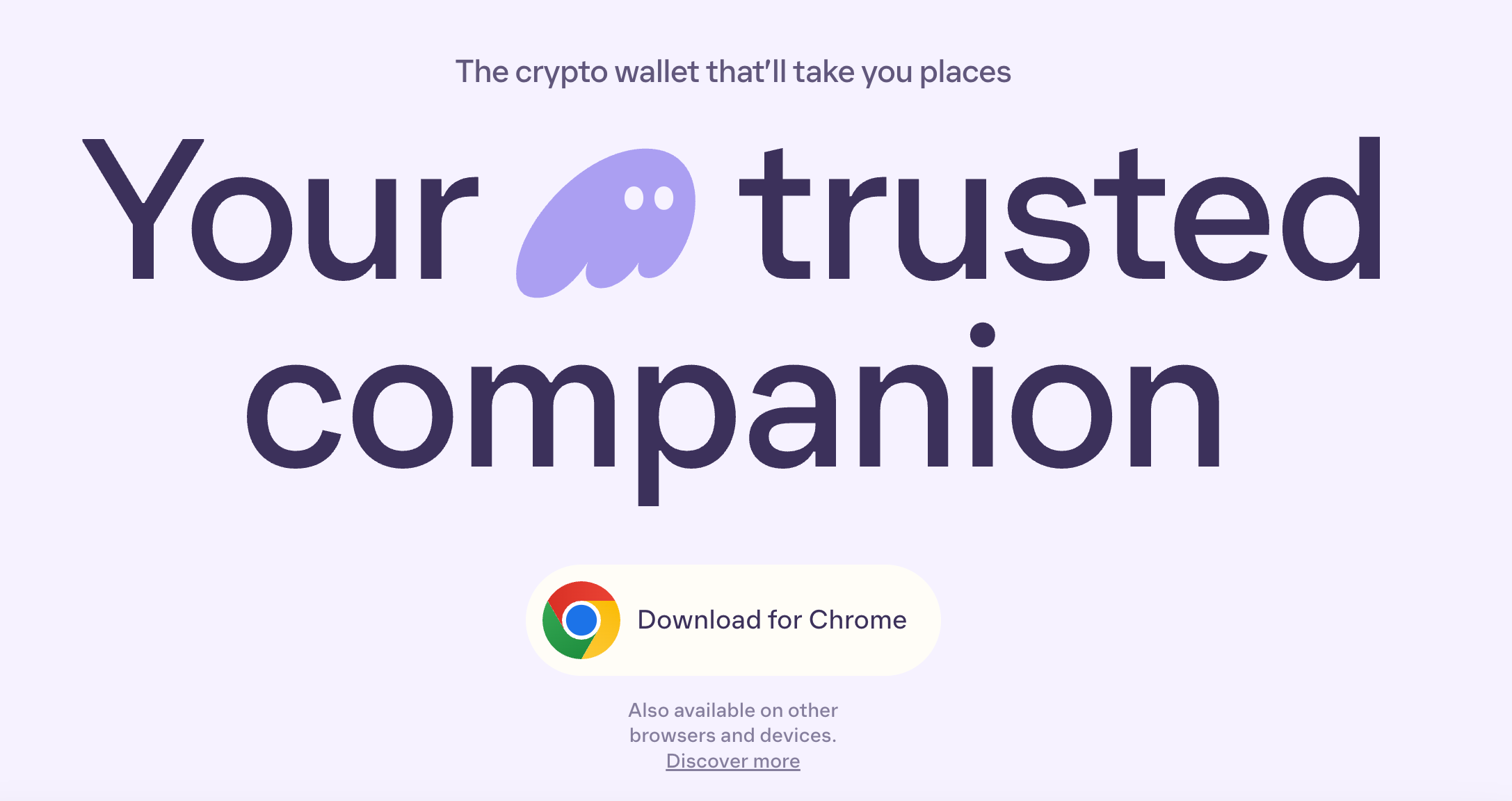
For desktop users, follow these steps for easy installation:
- Visit the Phantom website at phantom.app.
- Choose the appropriate version for your browser (Chrome, Firefox, Brave, Edge, etc.).
- Click "Add to Browser" to install the extension.
For mobile users, just visit the App Store (iOS) or Google Play Store (Android) on your phone and search for "Phantom". Download and install the official app.
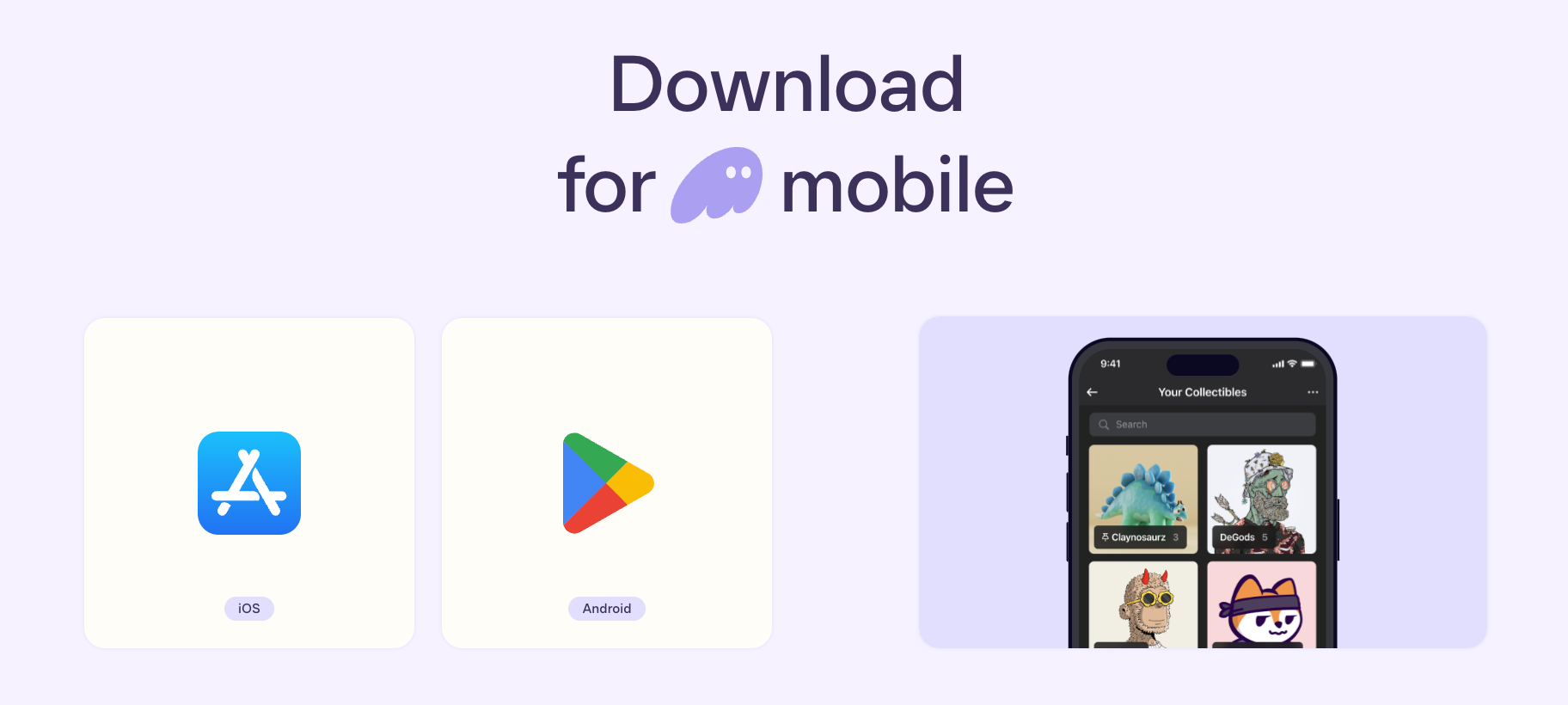
Option A) Create a new wallet
Once you have the app or extension installed, you’ll want to create a new Phantom wallet:
- Open Phantom wallet from your browser or mobile app.
- In the "Your Accounts" menu, click on "Add/ Connect Wallet".
- Click "Create New Account".
- Name your account and click "Create" to activate your new Phantom wallet.
- Save your recovery phrase in a secure location. This phrase (either 12 or 24 words in length) is essential for recovering your wallet if needed, so make sure it’s stored safely offline and not accessible to others.
- At any time, you can create a new wallet to manage your crypto assets across multiple accounts.
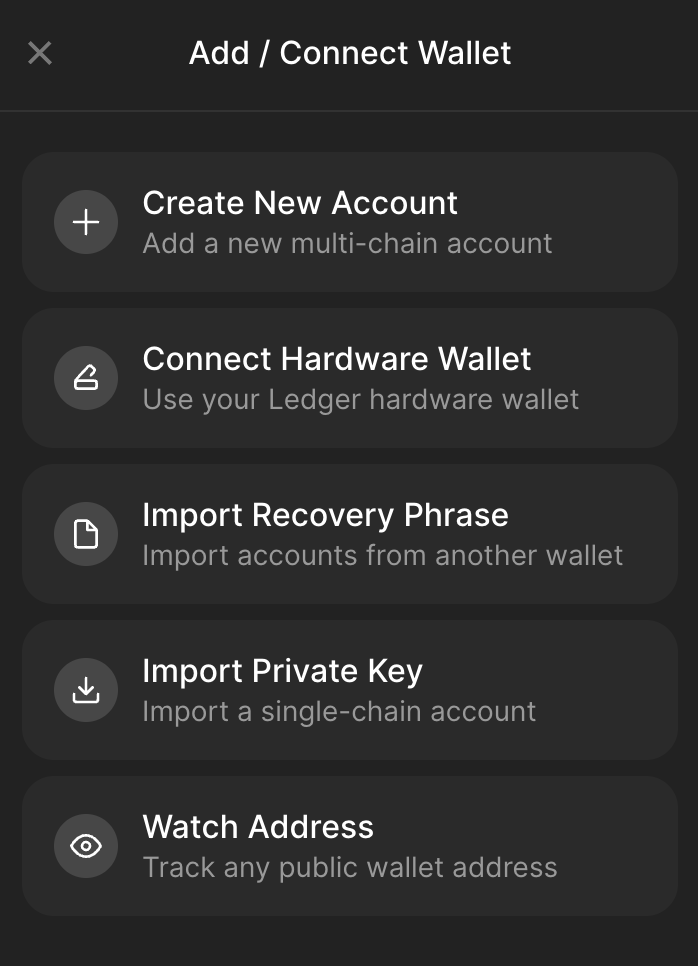
Option B) Import an existing wallet
If you already have a Solana wallet and want to import it into Phantom:
- Open Phantom wallet.
- Select the option to recover a wallet by clicking either "Import Secret Recovery Phrase" or "Import Private Key", depending on your security preferences.
- Enter your recovery phrase (12 words) or private key to restore your wallet.
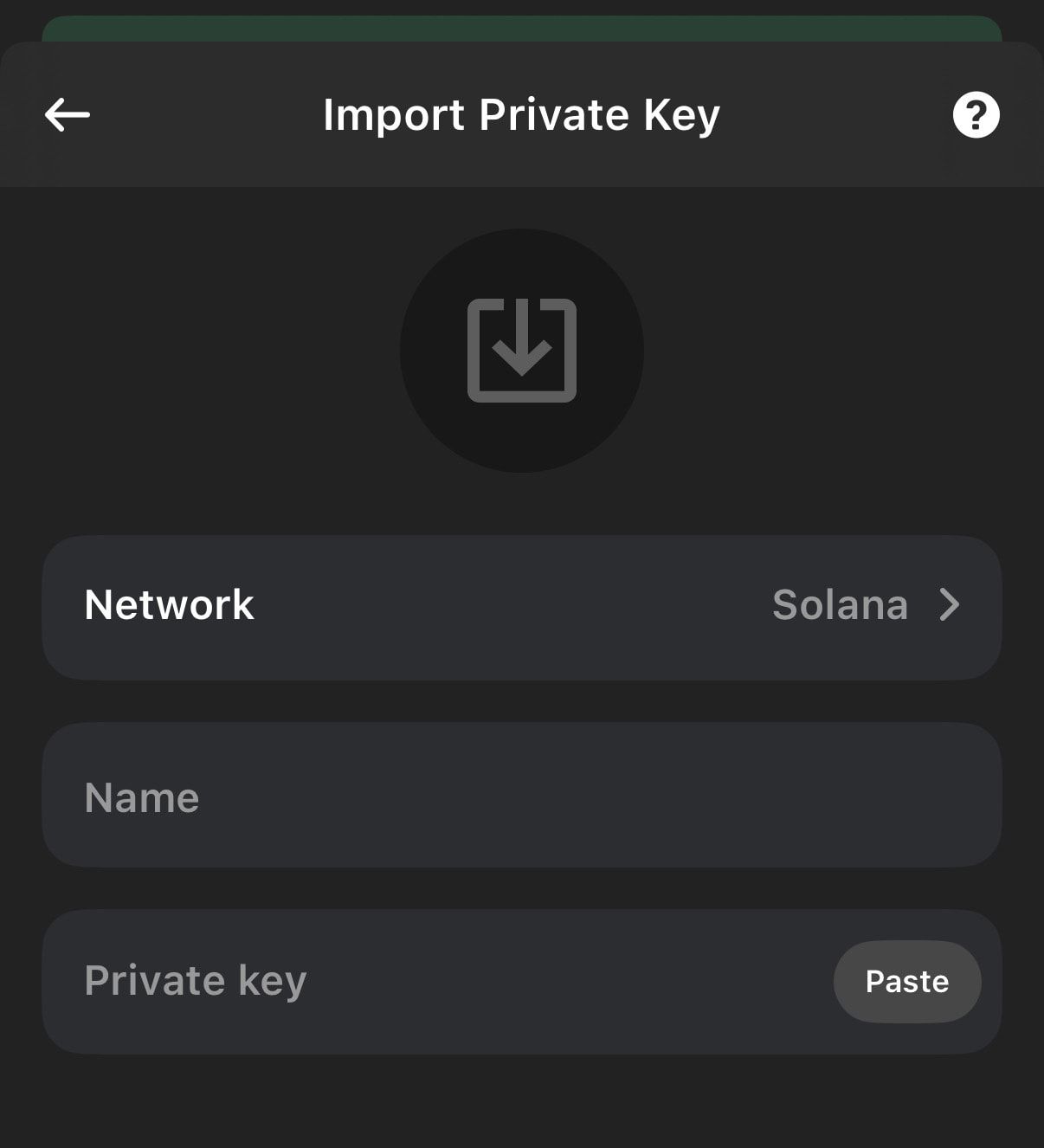
Option C) Connect a hardware wallet
- In Phantom's mobile app click "Connect Hardware Wallet".
- Enable bluetooth on your Ledger device.
- Follow the remaining instructions to link your Ledger to Phantom.
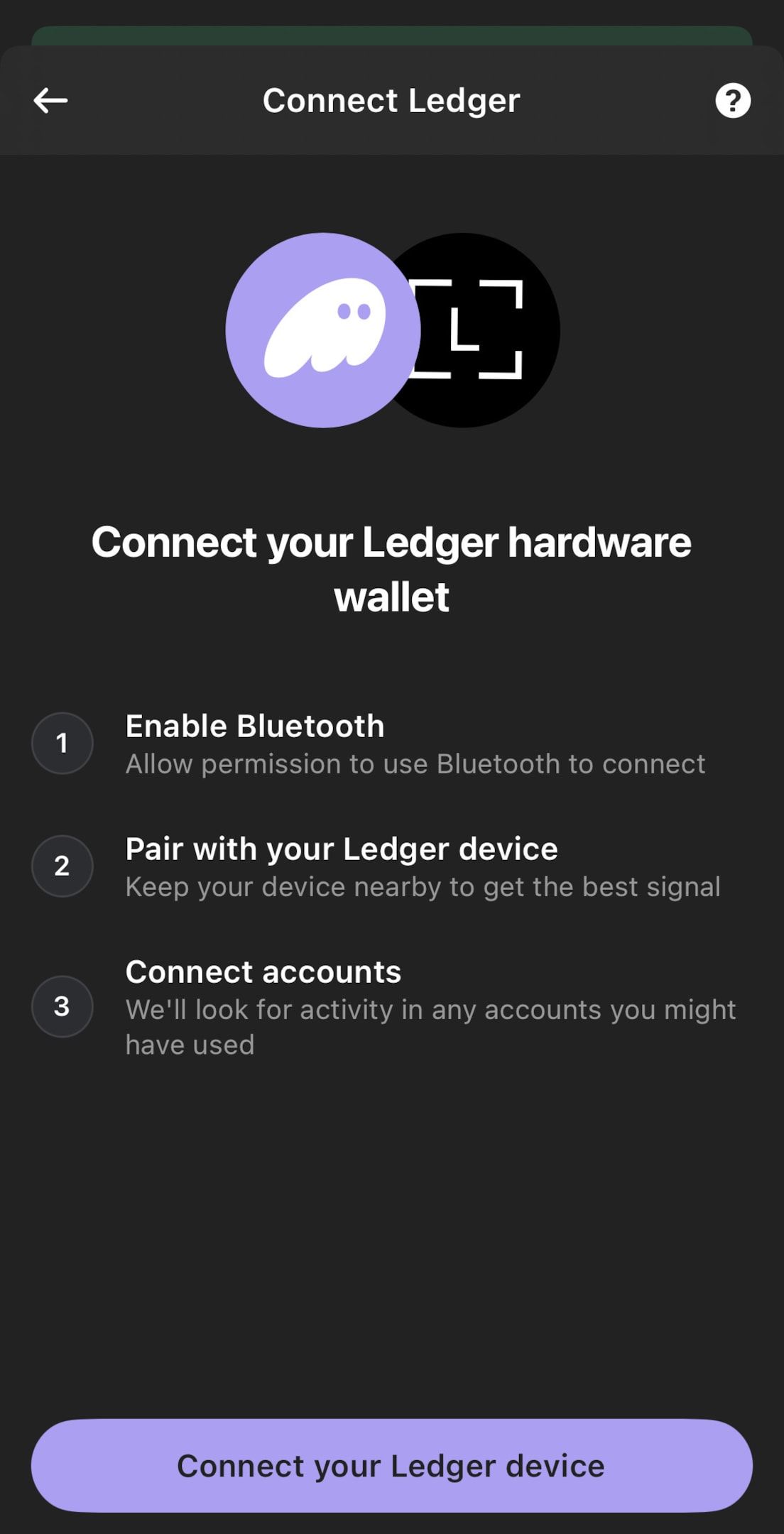
How to use Phantom wallet
Phantom wallet is packed with basic and advanced features. Once you’ve set it up, using it is a breeze.
1) Adding funds to Phantom wallet
There are a few different ways you can add funds to Phantom wallet. The most straightforward method is to top up by buying directly in your app:
- Click "Buy" on your wallet home screen.
- Choose the supported asset you want to purchase, like Solana (SOL), Ethereum (ETH), Polygon (MATIC), Bitcoin (BTC), USDC (USDC), and much more.
- Enter the amount of crypto you want to buy.
- Click "Credit & Debit Card" to select the provider to add funds with a card, Apple Pay, or your preferred payment method.
- Choose MoonPay for favorable rates and low fees.
- Click "Buy" and follow the remaining instructions on the MoonPay widget.
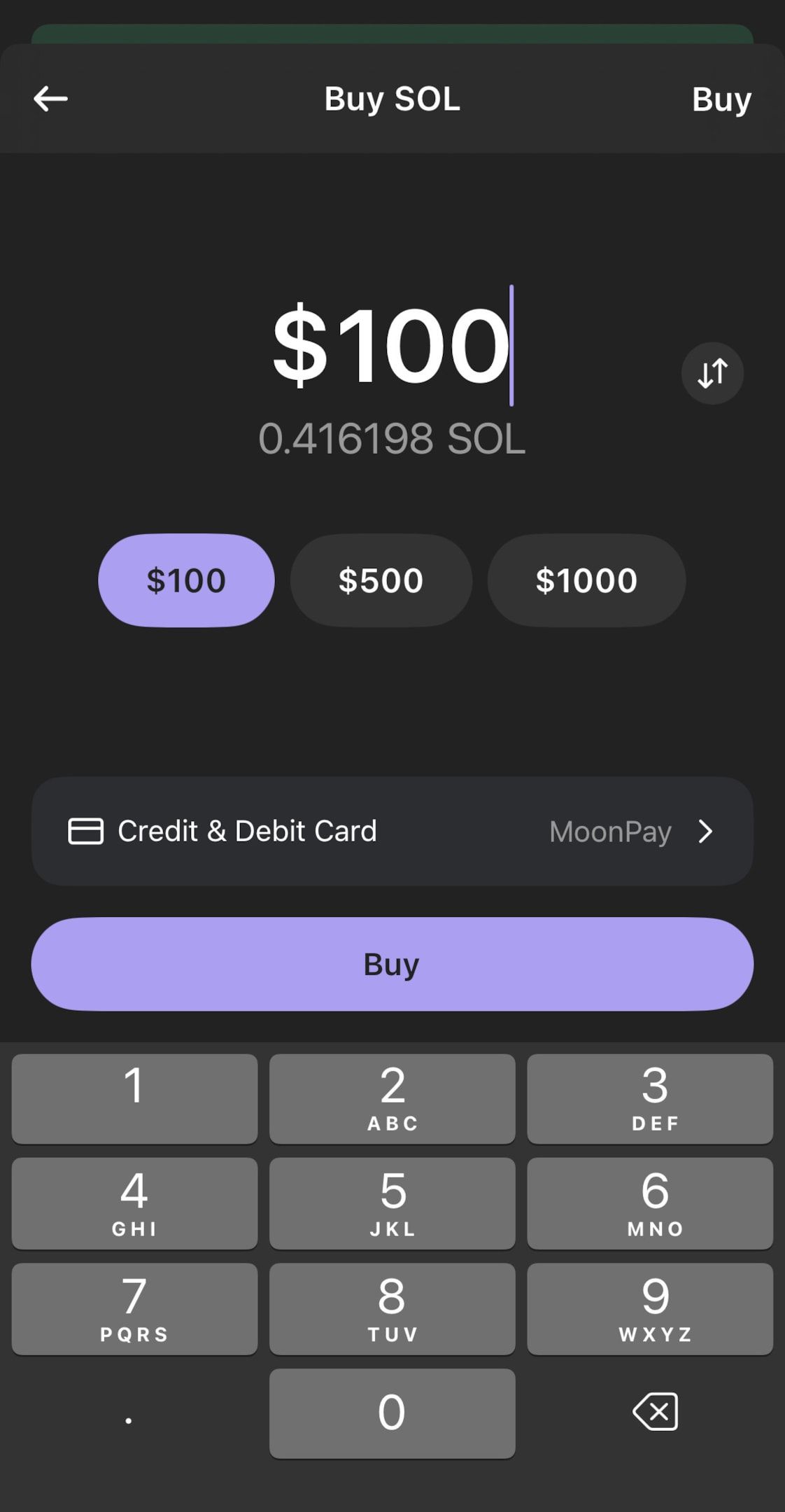
If you prefer to add funds by receiving from another wallet, or via swapping, scroll on.
2) Sending & receiving crypto
Phantom wallet makes it easy to send and receive SOL and other supported cryptocurrencies.
To send
- Click the "Send" button on your home screen.
- Select the token you want to send (you can skip this step by clicking the asset on your home screen instead, and then pressing "Send").
- Enter the recipient’s wallet address (you can copy and paste, or click on your linked Phantom accounts for faster sends).
- Enter the amount of crypto you want to send and click "Next".
- Confirm the transaction details and hit "Send".
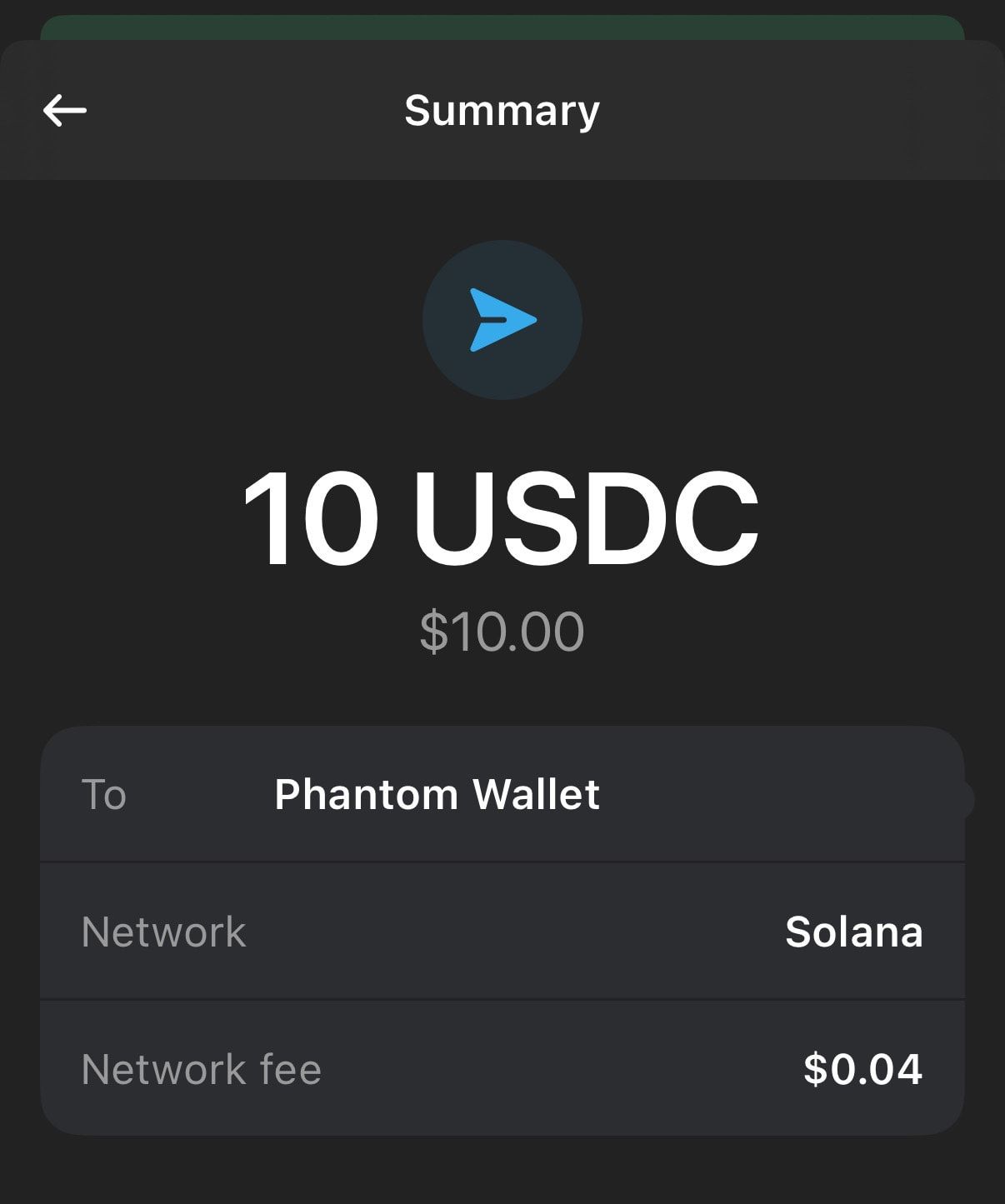
To receive
- Click "Receive" on your wallet home screen.
- Select the asset you want to receive (you can skip this step by clicking the asset on your home screen instead, and then pressing "Receive").
- Click one of two buttons to either generate a QR code or copy your wallet address.
- Share the QR code or address with the sender to receive crypto in your wallet.
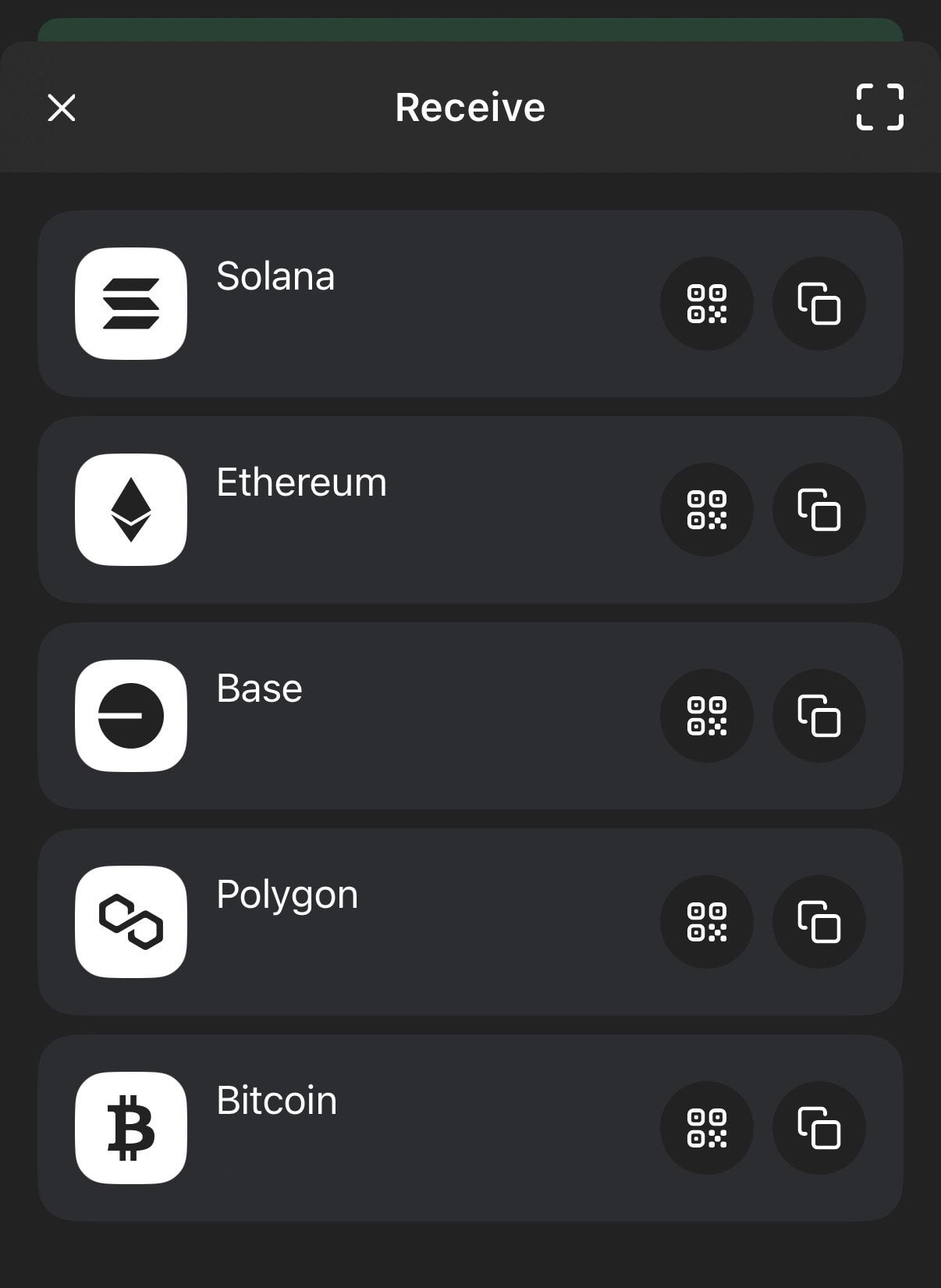
3) Swapping tokens in Phantom wallet
You can also use the wallet’s built-in swap feature to acquire other tokens directly from your Phantom Wallet:
- Open your Phantom Wallet and select "Swap."
- Choose the tokens you wish to swap.
- Enter the amount (either the amount to pay or receive)
- Click "Review Order" to confirm the transaction details, such as price, fees, and slippage.
- Click "Swap" to complete the transaction.
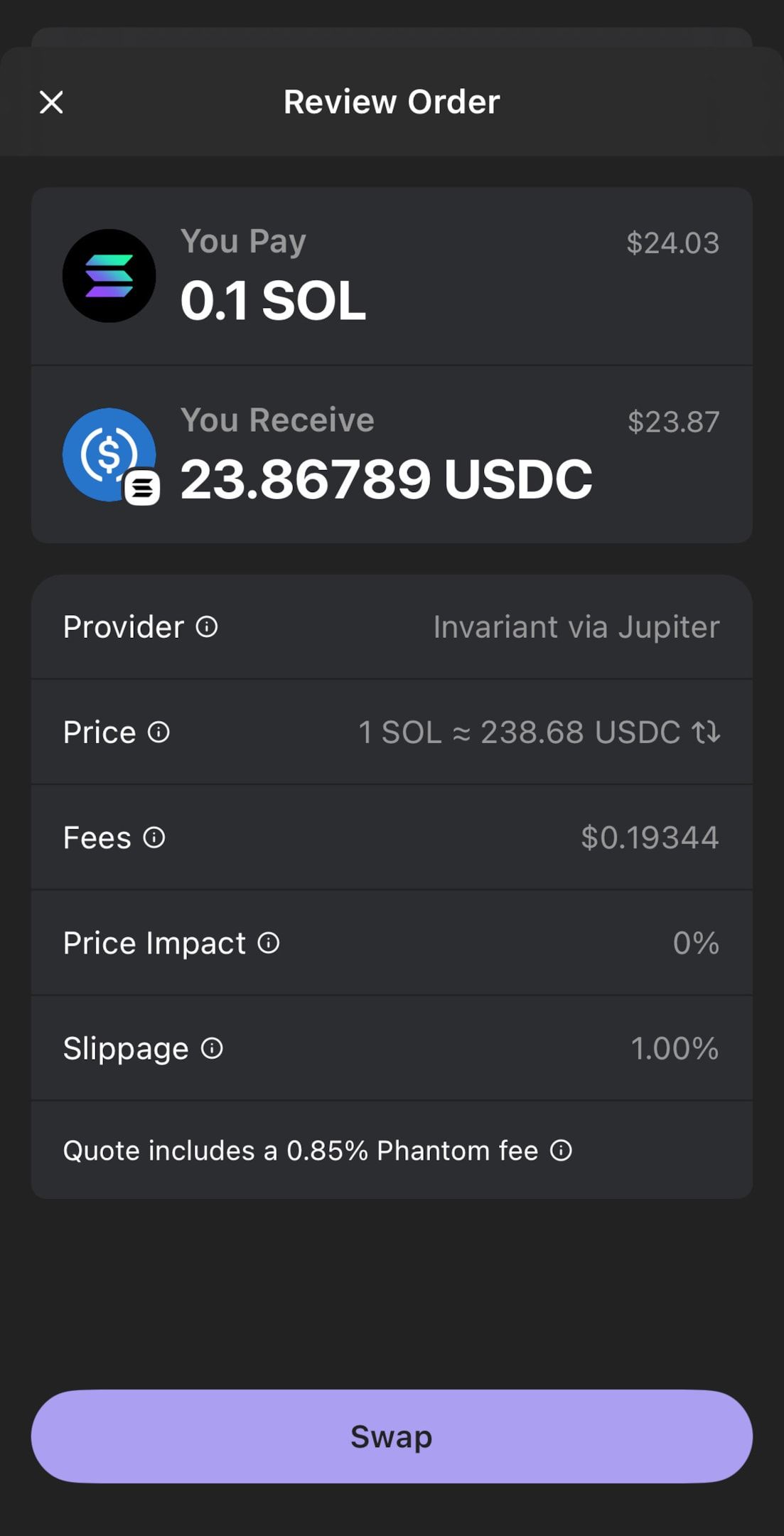
4) Managing NFTs on Phantom wallet
Phantom wallet can be a great place to store your Solana-based NFTs:
Just open Phantom and navigate to the "NFT" section (the second tab, with the image of 4 squares). Here you can view any NFT collection in your wallet, send NFTs to another wallet, list them on NFT marketplaces like Magic Eden in just a few clicks, or even quick sell in one-click.
5) Connecting Phantom wallet to dApps
Phantom Wallet can easily be connected to most decentralized applications (dApps) that run on the Solana network:
- Visit the dApp of your choice, on either mobile or desktop.
- Click "Connect Wallet."
- Select Phantom Wallet from the list of supported wallets.
- Approve the connection, and you’re ready to start using the decentralized application.
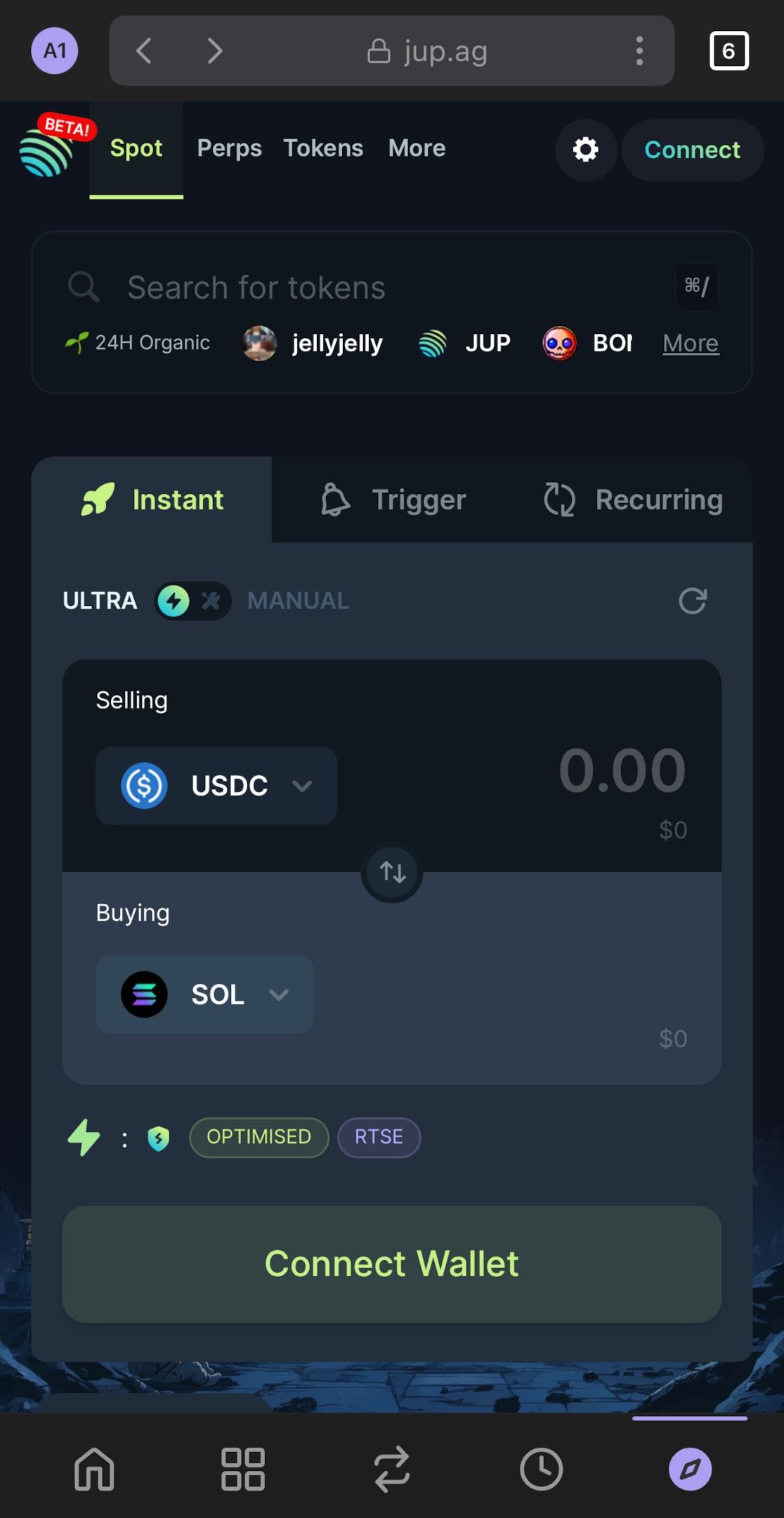
If you prefer, you can also utilize Phantom's explore tab (the final tab option) to connect to dApps directly from your wallet app.
Phantom wallet vs. other crypto wallets
When choosing a crypto wallet, users should consider how Phantom Wallet compares to other popular options. Let's take a look at how it stacks up against the competition:
Phantom wallet vs. MetaMask
MetaMask is primarily used for Ethereum and ERC-20 tokens, making it practical for those who prefer the Ethereum ecosystem. Phantom wallet, on the other hand, is built specifically for Solana (though it now offers Ethereum and Polygon compatibility).
So if you’re focused on Solana, Phantom is a more suitable choice for managing assets on Solana’s fast, low-cost network.
Phantom wallet vs. Trust Wallet
Trust Wallet is a multi-chain wallet supporting several blockchains, including Solana, Ethereum, Binance Smart Chain, and many more. While Trust may offer broader support across different chains, Phantom Wallet is designed for Solana and provides a more streamlined, efficient experience within the Solana ecosystem.
If you're heavily interested in Solana, Phantom’s tailored features make it a more specialized tool for managing SOL-based assets, NFTs, and DeFi.
Pros and cons of using Phantom wallet
While Phantom Wallet is widely praised for its user-friendly experience within the Solana ecosystem, like any tool, it has both strengths and weaknesses. Here's a closer look at the pros and cons:
Pros of using Phantom wallet
1. User-friendly interface
Phantom wallet is designed with simplicity in mind, offering an intuitive and easy-to-navigate interface that’s accessible for both beginners and experienced users.
2. Solana-specific focus
Phantom caters to the Solana blockchain, with a streamlined experience for managing Solana-based tokens, NFTs, and interacting with dApps.
3. Integrated token swaps
Phantom wallet allows users to swap cross-chain and Solana-based tokens, all directly within the wallet. This saves time and eliminates the need for third-party exchanges.
4. Security features
Phantom is a non-custodial wallet, giving you full control over your private keys and enhancing your privacy by not collecting unnecessary data. It also supports hardware wallet integration for added security.
5. NFT & DeFi compatibility
Phantom supports Solana-based NFTs and integrates with Solana DeFi protocols, allowing you to participate in staking, liquidity pools, and yield farming, all from the wallet—or by connecting in the app website.
6. Multi-platform access
With both a browser extension and a mobile app, Phantom Wallet provides versatility to manage your assets on desktop and mobile devices simultaneously.
Cons of using Phantom wallet
1. Limited multi-chain support
Phantom Wallet is focused primarily on Solana. While it has added support for additional blockchains like Ethereum and Bitcoin, you may need additional wallets for assets on other chains.
2. Lacks advanced features
For power users seeking advanced features and deeper customization, Phantom may feel a bit limited and simplistic compared to other wallets.
3. Newer to the market
While rapidly growing in popularity, Phantom is still a relatively new player compared to established wallets like Trust and MetaMask. This might cause some users to hesitate before downloading the app.
4. Limited NFT support
Phantom is optimized for Solana-based NFTs, so if you trade or hold NFTs from other blockchains (such as Ethereum), you’ll need a separate wallet like MetaMask.
5. No staking for non-Solana tokens
Phantom allows you to stake SOL directly in the app. However, unlike other wallets, Phantom does not offer built-in staking features for assets beyond Solana (such as ETH).
FAQs about Phantom wallet
Is Phantom wallet free to use?
Yes, Phantom Wallet is free to download and use.
There is no charge for creating an account or managing your assets, though transaction fees may apply when sending tokens or interacting with dApps. These fees are generally minimal on Solana’s low-cost network—especially compared to the gas fees on Ethereum.
How do I withdraw funds from Phantom wallet?
To withdraw funds, simply send your tokens to another wallet address. Select the "Send" option, enter the recipient's address, and confirm the transaction. Ensure you have enough SOL to cover transaction fees.
You can also sell Solana for fiat directly from your Phantom wallet by connecting to MoonPay's off-ramp. After sending your SOL to the provided wallet address, MoonPay will initiate the conversation and send your fiat funds to your chosen bank account or card.
Does Phantom wallet support Bitcoin?
Yes, Phantom Wallet has supported Bitcoin since May, 2024. You can now store BTC, Ordinals, and BRC-20s directly in the multi-chain application, alongside tokens like Solana.
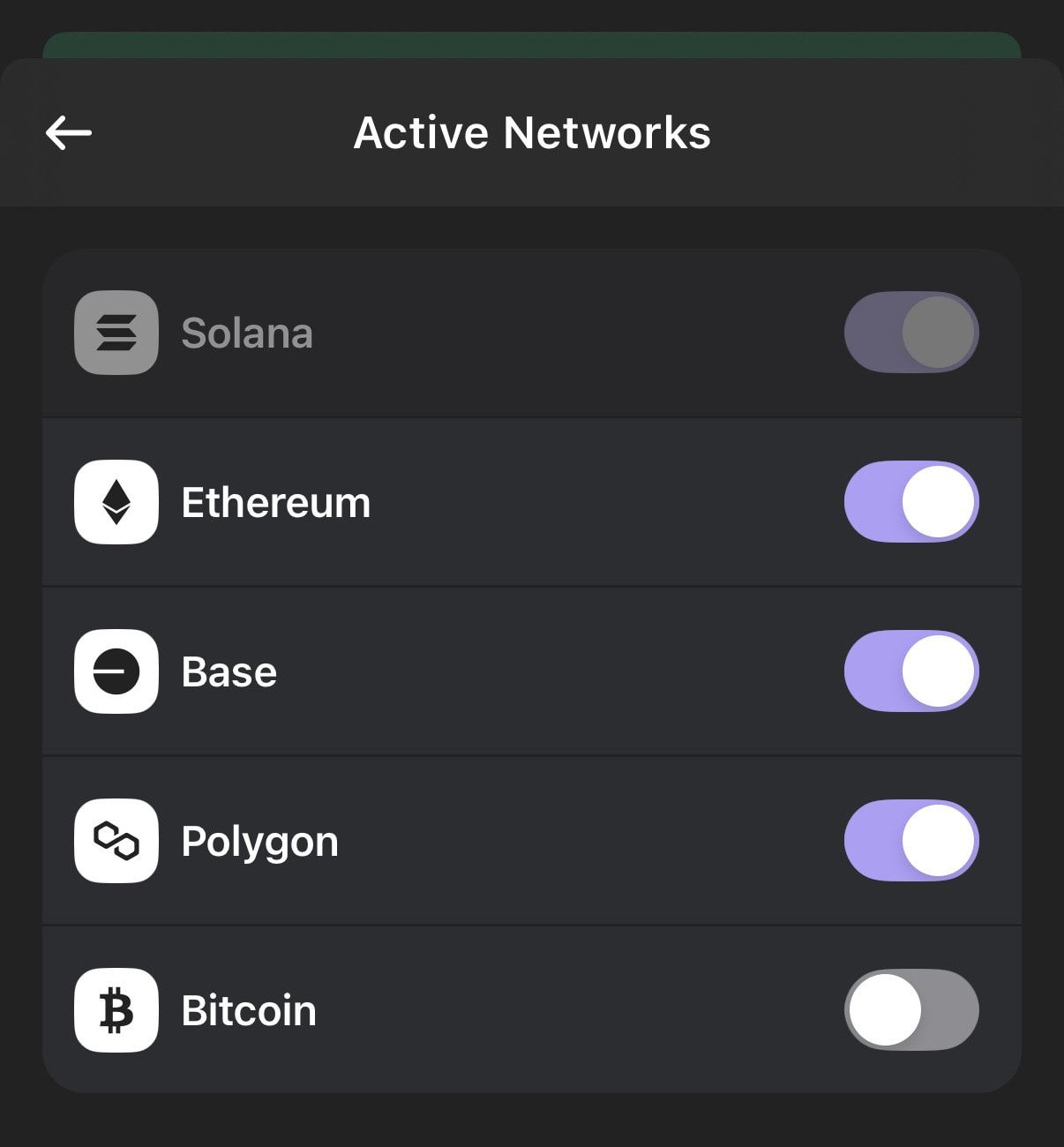
To enable BTC in your Phantom wallet, head to Settings and enable Bitcoin in the list of "Active Networks".
Can I trust Phantom wallet?
Phantom is a non-custodial wallet, meaning you control your private keys. The wallet also supports hardware wallet integrations with providers like Ledger for added security.
However, no wallet is completely immune to hacks and security breaches, so you should employ best practices like always backing up your seed phrase and storing it in a safe place offline.
Is Phantom wallet a hot or cold wallet?
Phantom is a hot wallet, meaning it is connected to the internet for easy access and transactions. While this offers convenience, it also makes it more vulnerable compared to cold wallets, which are offline and used for long-term storage.
Fortunately, Phantom allows you to connect your hardware wallet for enhanced security.
What blockchains are supported on Phantom?
While Phantom started off as a strictly-Solana based wallet app, it has since added support for Ethereum, Base, Polygon, Bitcoin, and Sui.
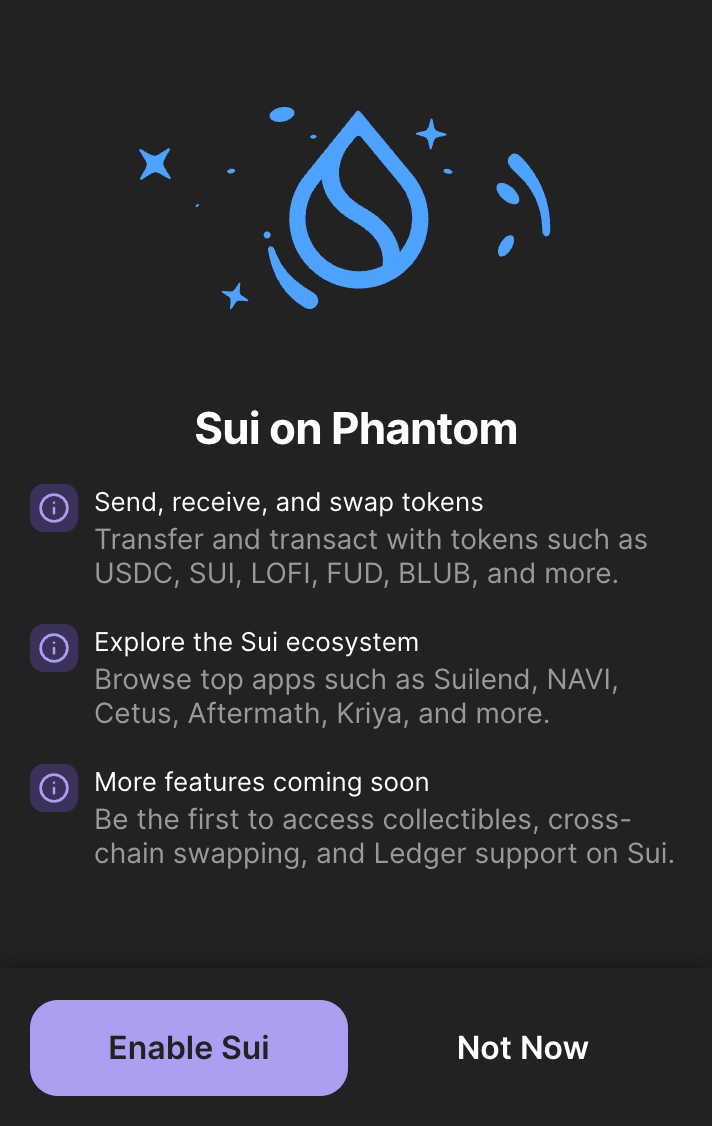
For cross-chain swaps, Phantom is compatible with assets on Solana, Ethereum, Polygon, and Base.






.png)